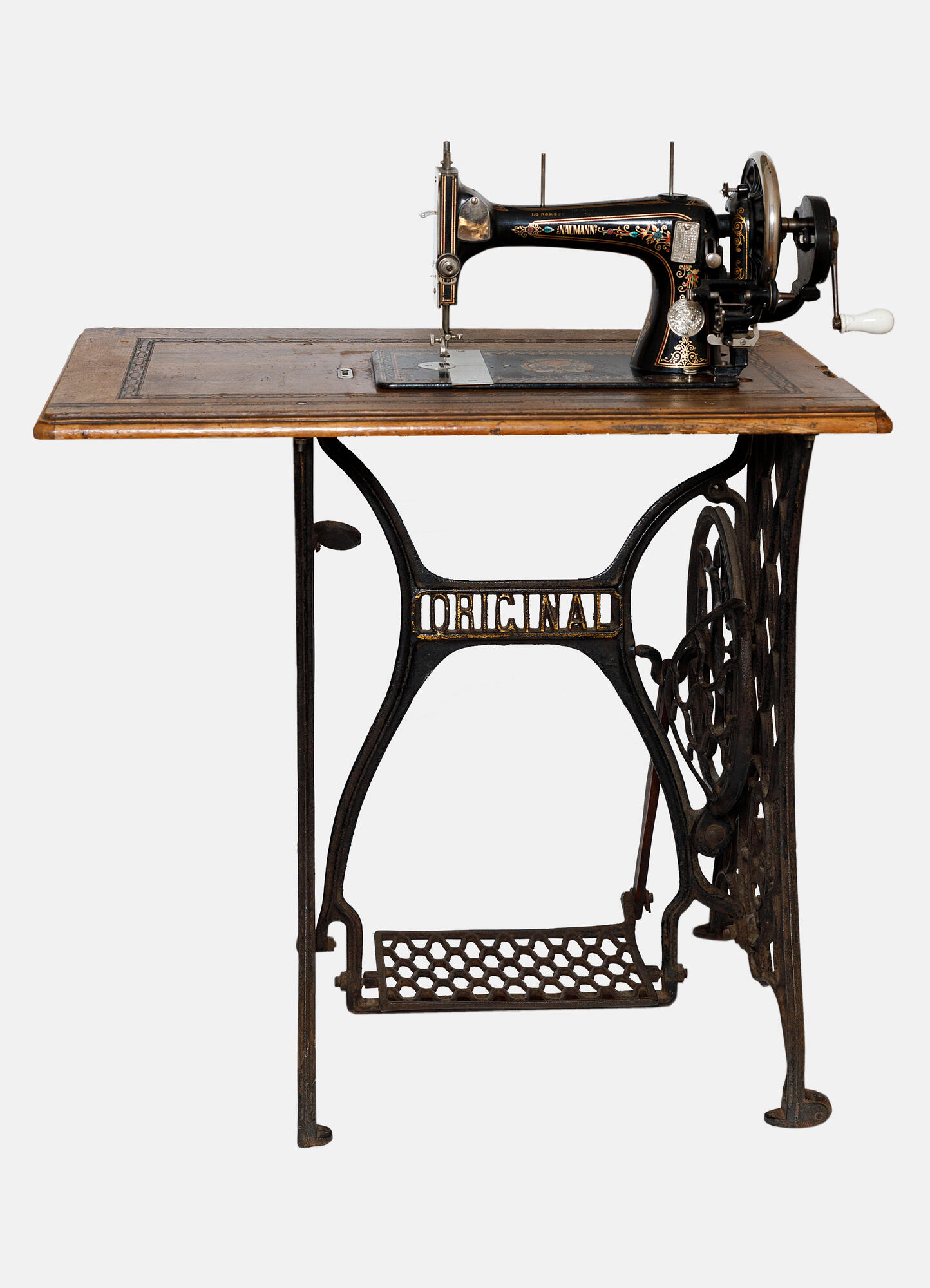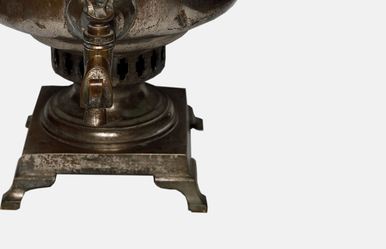Ivan Petrovich Pavlov — academician, scientist, and Nobel Prize winner — was the oldest child in the family, while his sister Lydia was the youngest. They had an age difference of 25 years and 8 other siblings in between, with only three of them surviving. After the death of their father, it was the youngest sister Lydia Petrovna Pavlova who inherited the Pavlov house in Ryazan and owned it until 1927.
By the window on the second floor of the Pavlov house, there is a NAUMANN sewing machine — a gift from the father Pyotr Dmitriyevich for Lydia’s wedding in 1895. That same year, the Popov Trading House celebrated its 25th anniversary, and in honor of the event, special Seidel & Naumann sewing machines with a festive design were produced. The exhibit is a rare collectible that has been preserved in impeccable condition.
The sewing machine has a white ceramic handle, and its platform is inlaid with pieces of mother-of-pearl. The machine itself is mounted on a black cast frame, its sidewalls are formed as decorative grids, and the pedal is shaped like a rectangular grid. A sewing machine like this was considered a valuable wedding gift, had pride of place in the house, and was carefully kept.
Lydia Pavlova sewed well and used the machine with care. It was suitable for any fabric, be it thin, dense, delicate, or rough. The machine was often used to mend clothes, including outerwear. The penchant for needlework was passed down to Lydia Petrovna from her mother, who was highly skilled in sewing and embroidery.
The machine was bought in one of the most famous trading houses of pre-revolutionary Russia — the Popov and Co Russian Association of Sewing Machines. The casing has retained a faded inscription meaning “25th Anniversary 1870 1895”, “Ordered by POPOV AND CO in Moscow”, as well as special marks, an image of the Popov couple, a medallion, and a unique number.
The Popov Trading House sold the most popular sewing machines made in England and Germany by manufacturers like Singer and Seidel & Naumann. The Seidel & Naumann company was located in Dresden and produced up to 300 sewing machines per day and 100,000 devices annually. In 1900, the company launched the production of typewriters, bicycles, jukeboxes, and train speedometers.
By the window on the second floor of the Pavlov house, there is a NAUMANN sewing machine — a gift from the father Pyotr Dmitriyevich for Lydia’s wedding in 1895. That same year, the Popov Trading House celebrated its 25th anniversary, and in honor of the event, special Seidel & Naumann sewing machines with a festive design were produced. The exhibit is a rare collectible that has been preserved in impeccable condition.
The sewing machine has a white ceramic handle, and its platform is inlaid with pieces of mother-of-pearl. The machine itself is mounted on a black cast frame, its sidewalls are formed as decorative grids, and the pedal is shaped like a rectangular grid. A sewing machine like this was considered a valuable wedding gift, had pride of place in the house, and was carefully kept.
Lydia Pavlova sewed well and used the machine with care. It was suitable for any fabric, be it thin, dense, delicate, or rough. The machine was often used to mend clothes, including outerwear. The penchant for needlework was passed down to Lydia Petrovna from her mother, who was highly skilled in sewing and embroidery.
The machine was bought in one of the most famous trading houses of pre-revolutionary Russia — the Popov and Co Russian Association of Sewing Machines. The casing has retained a faded inscription meaning “25th Anniversary 1870 1895”, “Ordered by POPOV AND CO in Moscow”, as well as special marks, an image of the Popov couple, a medallion, and a unique number.
The Popov Trading House sold the most popular sewing machines made in England and Germany by manufacturers like Singer and Seidel & Naumann. The Seidel & Naumann company was located in Dresden and produced up to 300 sewing machines per day and 100,000 devices annually. In 1900, the company launched the production of typewriters, bicycles, jukeboxes, and train speedometers.


